As the Olympics begin, Berkeley marks 50 years of excavating the Games’ origins in Greece
In April, the Olympic torch passed through Ancient Nemea, where Berkeley since 1974 has been unearthing a site of the Panhellenic Games.
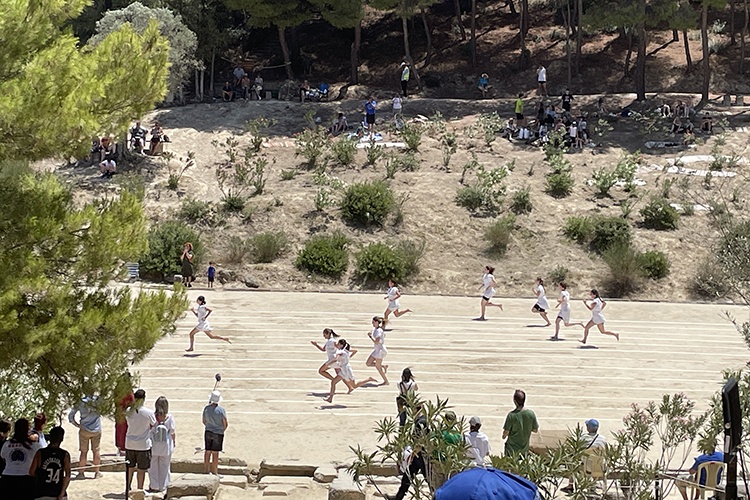
Courtesy of the Nemea Center for Classical Archaeology
July 23, 2024
In Greece, and about 2,000 miles from the 2024 Summer Olympics in Paris, UC Berkeley is celebrating 100 years of archaeological excavation at a site of the ancient Panhellenic Games, a religious and athletic event that inspired the modern Olympics.
Berkeley’s Nemea Center for Classical Archaeology in Ancient Nemea, Greece, also is marking the campus’s 50th year there. The 45-acre site opened in 1924, but Berkeley arrived in the early 1970s. Its first full season of excavation was in 1974, with Stephen Miller, a Berkeley classics professor, as director.
Since then, faculty, students and local residents have unearthed important and headline-grabbing antiquities that include a stadium and track, an entrance tunnel lined with ancient runners’ graffiti; the 4th century Temple of Zeus, where athletes made sacrifices before competing; an early Christian basilica; a hero’s shrine; a bathhouse; and what’s considered the world’s oldest remaining athletic locker room.
Last April, as a nod to the historical importance of the site and the excavation, research and conservation done there, the Olympic torch passed through Ancient Nemea on its way to Paris.
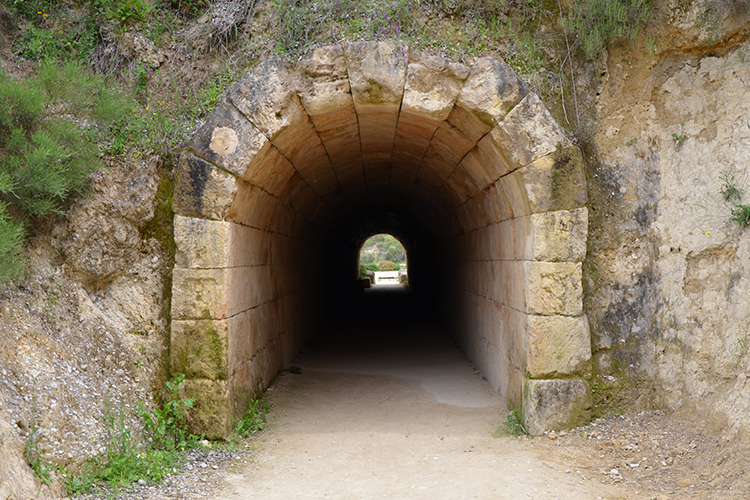
Courtesy of the Nemea Center for Classical Archaeology
The milestone celebrations also included an April conference at Berkeley and an exhibit in Greece. And this summer in Ancient Nemea, the modern Nemean Games were held June 28-30. A recreation on the site’s 2,300-year-old clay track of ancient footraces, these games were launched in 1996 by Miller, who died in August 2021. They’ve now been held eight times.
During Greece’s classical period, the Panhellenic Games rotated among four sites — Nemea, Delphi, Isthmia and Olympia — and featured the area’s fastest competitors.
Today’s Nemean Games are for anyone, regardless of athletic ability. Run by the international Society for the Revival of the Nemean Games, which Miller founded and directed, they were designed to be held every four years, like the modern Olympics. To date, more than 5,000 people from 120 different countries, from ages 6 to 96, have participated. Races are grouped by age and gender.
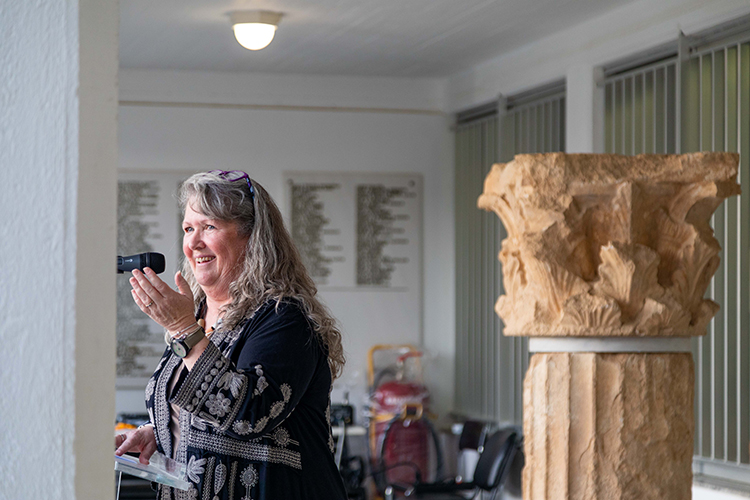
Courtesy of the Nemea Center for Classical Archaeology
Kim Shelton, the Berkeley excavation site’s director since 2005, said Berkeley students also participated in the three-day event, which was dedicated to Miller. About 1,000 people attended, with spectators seated on rugs and blankets strewn on the sloping sides of the stadium, as was the ancient custom.
Short-distance, 100-meter footraces were run, as well as a long distance, 7.5-kilometer “Footsteps of Heracles” race, with music, poetry, pageantry and tributes to Miller in between. Traditional crowns of wild celery were awarded to the victors.
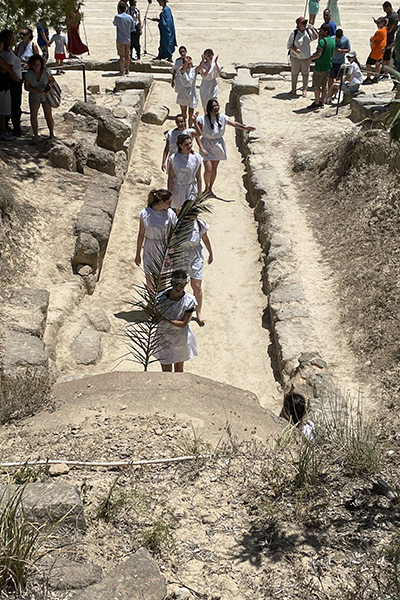
Courtesy of the Nemea Center for Classical Archaeology
The festivities also included a professional demonstration of pankration — an ancient Panhellenic event that combined boxing and wrestling, with few rules and restrictions.
“The Games have taken place every four years since 1996, except for 2020, when they were canceled because of COVID and were held instead in 2022,” said Shelton. To return the footraces to the same cycle as the modern Olympics, they were held again this summer, complete with barefoot runners in white tunics — the ancient runners ran nude — and judges, heralds and trumpeters in ancient-looking garb.
Former Berkeley chancellors Carol Christ, Robert Berdahl and Robert Birgeneau are on the society’s honorary committee, along with former Olympians and Greek and American professors and government officials. Sen. Dianne Feinstein was a committee member.
The Nemea Center, in addition to excavations in Greece, also operates a research center and archives in Dwinelle Hall. During the academic year, Shelton is at Berkeley directing and fundraising for the center and teaching in the Department of Ancient Greek and Roman Studies. Each summer, she returns to Nemea, working alongside about six to eight graduate students and several colleagues from other universities, and she runs a field school, primarily for undergraduates.
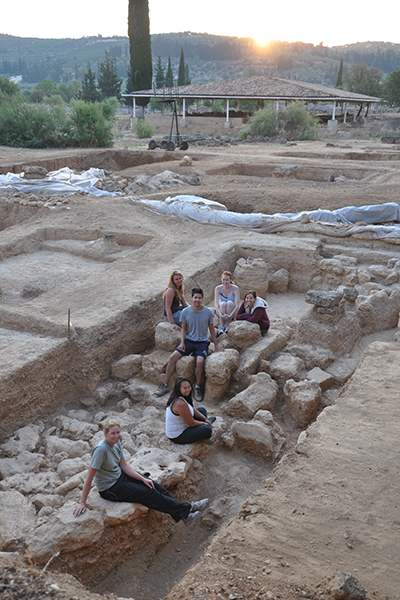
Courtesy of the Nemea Center for Classical Archaeology
Recent excavation and conservation work has focused on the origin of the sanctuary and what preceded it in the prehistoric period, and ancient Greek hero cults — the widespread religious worship of human heroes as gods — are being studied. The Nemea team also is reconstructing some of the 4th century temple’s Doric columns and entablature.
Many artifacts from decades of digs at the center are displayed in the on-site Archaeological Museum of Nemea. The museum, donated to the Greek state in 1984, also has a digital collection to more widely share the finds, which include coins, figurines, pottery and 15th century gold jewelry.
Shelton said plans at the center for future excavation include exploration of the area west of the sanctuary, where early settlements are located.
The center’s goals, she said, are to investigate the region’s history and Greek religion, with Nemea as the context, “and to preserve and conserve the site for the public. Outreach and education are essential parts of our mission.”